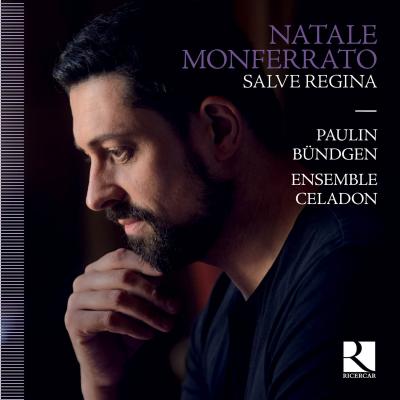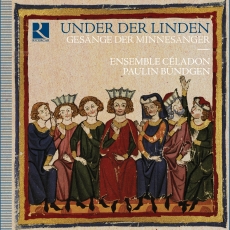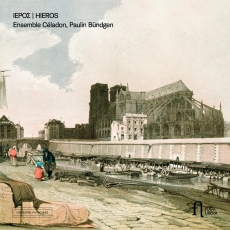Monferrato: Salve Regina
Monferrato: Salve Regina

Choose quality
Studio Master (192) FLAC
- Studio Master (192) ALAC
- Studio Master FLAC
- Studio Master ALAC
- CD Quality FLAC
- CD Quality ALAC
- MP3
- Sic ergo Jesu de SacramentoComposer(s) Natale MonferratoArtist(s) Paulin Bündgen Ensemble Céladon
Sic ergo Jesu de Sacramento
06:02$2.30 - Ad sonos pro quotlibet SanctoComposer(s) Natale MonferratoArtist(s) Paulin Bündgen Ensemble Céladon
Ad sonos pro quotlibet Sancto
07:54$3.40 - Regina CæliComposer(s) Natale MonferratoArtist(s) Paulin Bündgen Ensemble Céladon
Regina Cæli
04:40$2.30 - Jubilate Deo de Beata Maria VirgineComposer(s) Natale MonferratoArtist(s) Paulin Bündgen Ensemble Céladon
Jubilate Deo de Beata Maria Virgine
04:13$2.30 - Salve ReginaComposer(s) Natale MonferratoArtist(s) Paulin Bündgen Ensemble Céladon
Salve Regina
13:15$4.60 - Vigila mortalis in omni temporeComposer(s) Natale MonferratoArtist(s) Paulin Bündgen Ensemble Céladon
Vigila mortalis in omni tempore
03:52$2.30 - Propera Domine de SacramentoComposer(s) Natale MonferratoArtist(s) Paulin Bündgen Ensemble Céladon
Propera Domine de Sacramento
07:11$3.40 - Convenite terrigenæ de Beata M. VirgineComposer(s) Natale MonferratoArtist(s) Paulin Bündgen Ensemble Céladon
Convenite terrigenæ de Beata M. Virgine
08:44$3.40 - Clamo ad te de Beata Maria VirgineComposer(s) Natale MonferratoArtist(s) Paulin Bündgen Ensemble Céladon
Clamo ad te de Beata Maria Virgine
06:20$2.30
Total running time: 62 minutes.
Album information
This world premiere recording blazes the trail for discovery of an undeservedly neglected composer: Natale Monferrato (1610-85).
Of those composers who held the highest positions at St Mark’s basilica in Venice, Monferrato is manifestly one of the most thoroughly forgotten nowadays. After working with the leading musicians of this prestigious institution, he succeeded Francesco Cavalli as maestro di cappella in 1676.
His output, consisting exclusively of sacred music, includes some twenty collections published between 1647 and 1681. Although he wrote a great deal of polyphonic music, he also produced three collections of Motetti a voce sola. Most unusually, these three books accord an important place to compositions for the often neglected alto voice. They are so voluminous that only the Libro Terzo of 1666 was used for this recording. The motets are divided into varied and contrasted sections that range from the spirit of recitative to that of the aria, using very diverse forms in a manner that is bound to remind us of the models of opera as it developed in Venice from 1637 onwards.

